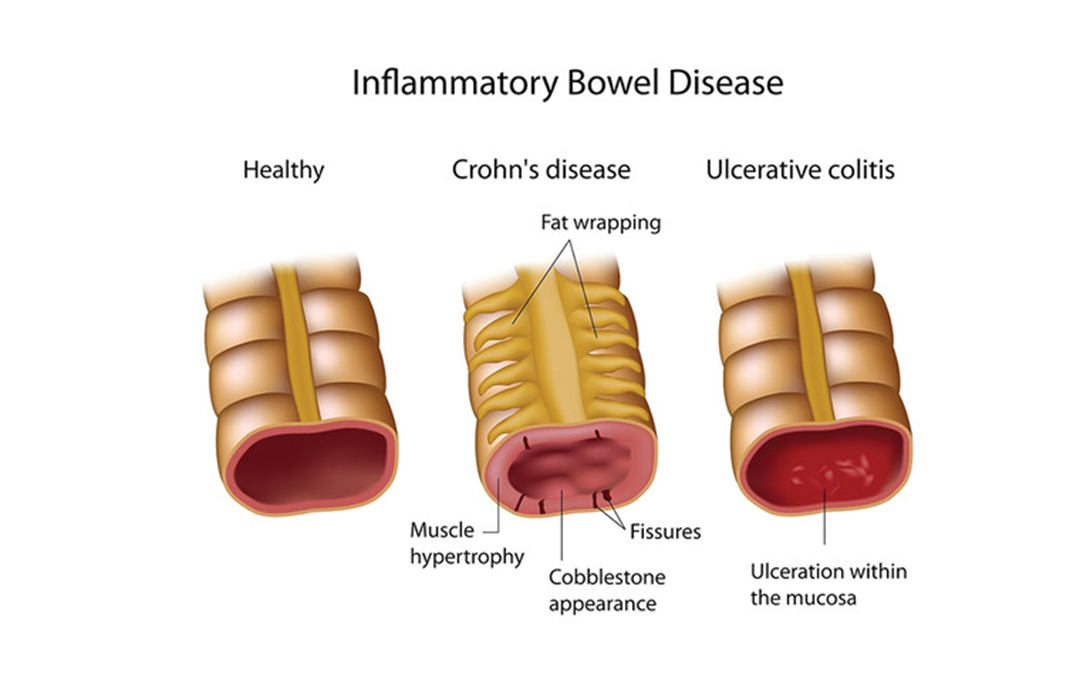A client is hospitalized with an inflammatory bowel disease (IBD) exacerbation and is being treated with a corticosteroid. The client develops a rigid abdomen with rebound tenderness. Which action should the nurse take?
Measure capillary glucose level.
Encourage ambulation in the room.
Monitor for bloody diarrheal stools.
Obtain vital sign measurements.
The Correct Answer is D
Choice A reason: Measuring capillary glucose level is not a priority action for a client with a rigid abdomen and rebound tenderness. These signs indicate peritonitis, which is a serious complication of IBD that requires immediate attention. Corticosteroids can increase blood glucose levels, but this is not an urgent concern in this situation.
Choice B reason: Encouraging ambulation in the room is not appropriate for a client with a rigid abdomen and rebound tenderness. These signs indicate peritonitis, which is a serious complication of IBD that requires immediate attention. Ambulation can worsen the pain and inflammation, and increase the risk of bowel perforation.
Choice C reason: Monitoring for bloody diarrheal stools is important for a client with IBD, but not a priority action for a client with a rigid abdomen and rebound tenderness. These signs indicate peritonitis, which is a serious complication of IBD that requires immediate attention. Bloody stools can be a sign of ulceration or bleeding in the bowel, but they are not specific to peritonitis.
Choice D reason: Obtaining vital sign measurements is the priority action for a client with a rigid abdomen and rebound tenderness. These signs indicate peritonitis, which is a serious complication of IBD that requires immediate attention. Vital signs can reveal signs of infection, inflammation, shock, and organ failure, which can guide the appropriate interventions and treatments.

Nursing Test Bank
Naxlex Comprehensive Predictor Exams
Related Questions
Correct Answer is D
Explanation
Choice A reason: Measuring capillary glucose level is not a priority action for a client with a rigid abdomen and rebound tenderness. These signs indicate peritonitis, which is a serious complication of IBD that requires immediate attention. Corticosteroids can increase blood glucose levels, but this is not an urgent concern in this situation.
Choice B reason: Encouraging ambulation in the room is not appropriate for a client with a rigid abdomen and rebound tenderness. These signs indicate peritonitis, which is a serious complication of IBD that requires immediate attention. Ambulation can worsen the pain and inflammation, and increase the risk of bowel perforation.
Choice C reason: Monitoring for bloody diarrheal stools is important for a client with IBD, but not a priority action for a client with a rigid abdomen and rebound tenderness. These signs indicate peritonitis, which is a serious complication of IBD that requires immediate attention. Bloody stools can be a sign of ulceration or bleeding in the bowel, but they are not specific to peritonitis.
Choice D reason: Obtaining vital sign measurements is the priority action for a client with a rigid abdomen and rebound tenderness. These signs indicate peritonitis, which is a serious complication of IBD that requires immediate attention. Vital signs can reveal signs of infection, inflammation, shock, and organ failure, which can guide the appropriate interventions and treatments.

Correct Answer is B
Explanation
a) The client's age: The client is 70 years old, which puts her at a higher risk of having a stroke or other cardiovascular problems. Stroke is a medical emergency that requires prompt treatment to prevent brain damage and disability.
b) The client's facial droop: The client has a noticeable facial droop, which is a sign of facial nerve weakness or paralysis. This can be caused by a stroke, Bell's palsy, or other neurological conditions. Facial droop can affect the client's ability to speak, eat, and express emotions.
c) The client's garbled speech: The client has garbled speech, which means she has difficulty producing or understanding words. This can be caused by a stroke, brain injury, or other disorders that affect the language areas of the brain. Garbled speech can impair the client's communication and cognition.
d) The client's alcohol consumption: The client had a few drinks at a seafood restaurant, which may have interacted with her medications or medical conditions. Alcohol can increase the risk of bleeding, lower blood pressure, and worsen dehydration. Alcohol can also impair the client's judgment and coordination.
e) The client's seafood intake: The client ate seafood at a restaurant, which may have triggered an allergic reaction or food poisoning. Seafood allergies can cause symptoms such as hives, swelling, breathing difficulties, and anaphylaxis. Food poisoning can cause symptoms such as nausea, vomiting, diarrhea, and dehydration.
Whether you are a student looking to ace your exams or a practicing nurse seeking to enhance your expertise , our nursing education contents will empower you with the confidence and competence to make a difference in the lives of patients and become a respected leader in the healthcare field.
Visit Naxlex, invest in your future and unlock endless possibilities with our unparalleled nursing education contents today
Report Wrong Answer on the Current Question
Do you disagree with the answer? If yes, what is your expected answer? Explain.
Kindly be descriptive with the issue you are facing.
